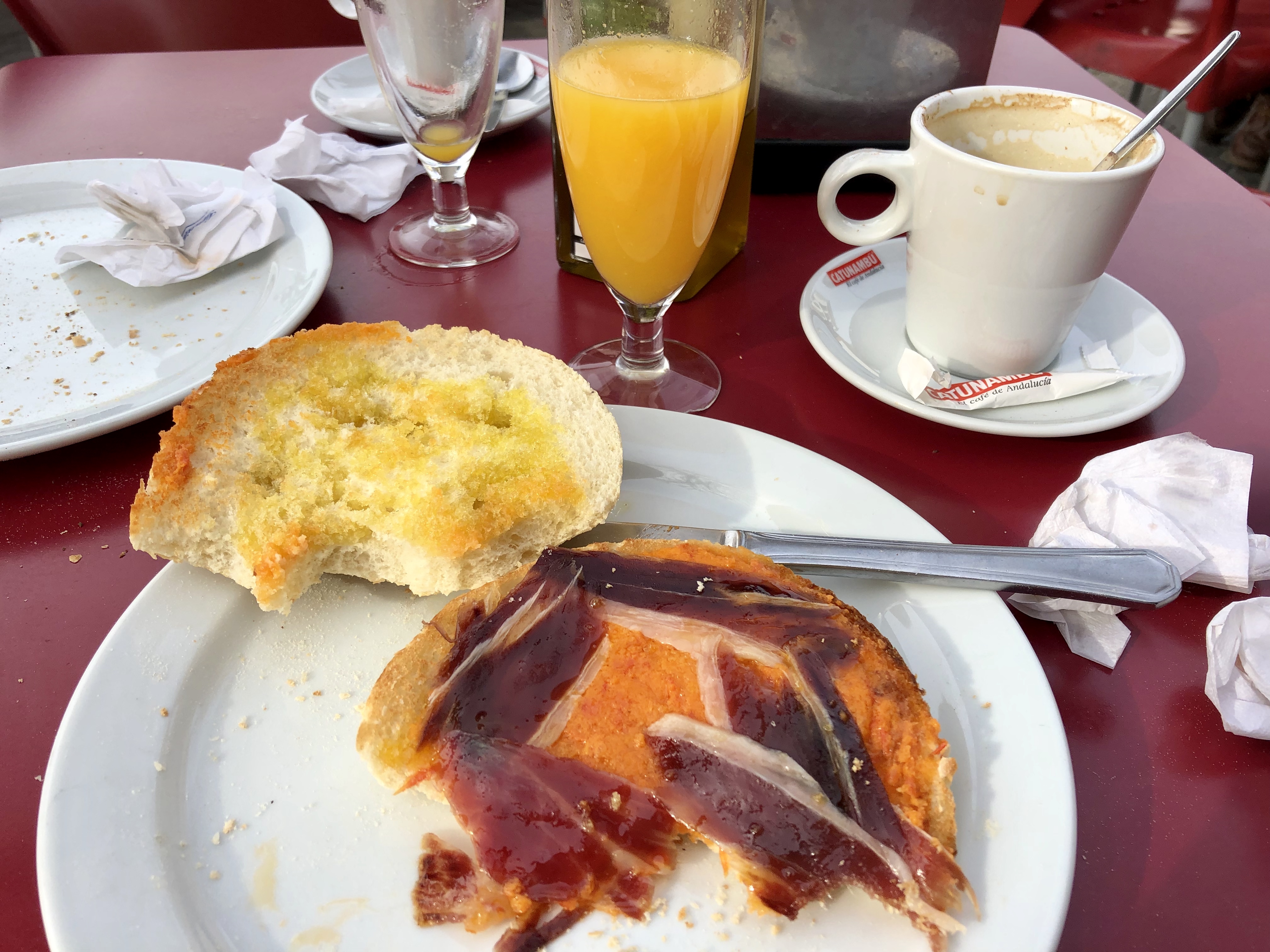The Simple Pleasure of Eating a Traditional Breakfast in Seville

Since you were a kid, you’ve been hearing that breakfast is the most important meal of the day, and it’s true. Studies show that you’re more attentive when you have something in your stomach in the morning, and it signals your metabolism to start running. Science aside, breakfast can be the perfect way to start your day as you eat something delicious, wholesome, and satisfying. Nowhere is this more true than in Seville, where the local residents have the art of eating a leisurely breakfast down pat. Find out why savoring a traditional breakfast in Seville is going to become one of the highlights of your day!
What does a traditional breakfast in Seville consist of?

Photo by Trevor.Huxham on Visual Hunt / CC BY-NC-ND
A traditional breakfast in Seville, or desayuno andaluz, is something that you’ll find across the southern region of Andalucía. Spanish cuisine is quite regional, so don’t expect to find the same breakfast in the north that you would in the south. That said let’s look at what you can expect to eat in Seville.
There are three main components to a morning meal in Southern Spain:
- the tostada (toast)
- café (coffee)
- zumo natural (juice)
It sounds so simple because it is. It’s so much a part of the culture the south that the Junta de Andalucía, the local governing body, implemented a program in schools called “Conoce el Desayuno Andaluz,” or “Know the Andalusian Breakfast.” In 2008, school children began learning the importance of a healthy, Mediterranean diet and how the region’s typical breakfast is an integral part. If the locals love this breakfast that much, you know it must be good! So let’s break it down and look at the essential parts of a real Andalusian breakfast.
The toast
Toast is just toast, right? Think again. Spaniards use a soft, round bread called a mollete, which originated in the city of Antequera in Málaga. It’s lightly toasted to a beautiful golden brown. The next step is to drizzle some heart-healthy and delicious extra-virgin olive oil on your toast. Olive oil is Spain’s alternative to butter and a staple in the Spanish kitchen. Next goes on the tomate rallado, crushed or grated tomatoes, and a pinch of sea salt.
The purist would say that’s all you need, but those feeling like they need a boost of protein will often add jamón york, or a slice of deli ham on top. If you’re looking for a true Spanish experience, you need to go even bigger: top your tostada off with some jamón ibérico! Most tapas bars have a ham leg inside and will gladly shave off a few slices for you for an extra charge.
See more: Tips for Ordering the Perfect Cup of Coffee in Spain
The coffee
 Spanish coffee is strong, delicious, and will give you the burst of energy that you need to start your morning. As we’ve mentioned before, there are many ways to order and enjoy your coffee in Spain. That said, try the traditional café con leche. This is the go-to of most locals enjoying their breakfast in Seville. A shot of espresso is topped off with steamed milk and a bit of frothy foam. If you’re familiar with a latte, this is what you can expect but on a smaller scale. It makes for the perfect accompaniment to your perfect desayuno andaluz.
Spanish coffee is strong, delicious, and will give you the burst of energy that you need to start your morning. As we’ve mentioned before, there are many ways to order and enjoy your coffee in Spain. That said, try the traditional café con leche. This is the go-to of most locals enjoying their breakfast in Seville. A shot of espresso is topped off with steamed milk and a bit of frothy foam. If you’re familiar with a latte, this is what you can expect but on a smaller scale. It makes for the perfect accompaniment to your perfect desayuno andaluz.
The juice
The last part of a traditional breakfast in Southern Spain is the fresh-squeezed orange juice. Spain is famous around the world for its orange trees that bloom in the winter, which make for delicious, fresh orange juice. Forget the stuff that comes from a carton. Most bars in Spain have a juicer in house and will squeeze you out a fresh, healthy juice in a matter of minutes. It’s a great way to add some vitamin C to your meal!
Tips to know
While ordering breakfast in Seville is pretty straightforward, there are a couple of things that you might find helpful to know.
- When ordering a tostada, your server will ask you if you want a media (half) or entera (whole).
- Some bars might have whole wheat bread, but not all do. If you’re curious, ask for pan integral.
- When ordering a juice, make sure you ask for a zumo natural. By just asking for a zumo de naranja you might end up with a glass of juice that came from a carton or bottle and not the real stuff.
- Most bars have offers where you can get a half toast with olive oil and tomato with a coffee for 2-3 euros. The more you add on to your breakfast the more it will cost, but you can usually expect breakfast to be 5 euros or less.
Want to savor ever flavor that Seville has to offer? Join Food Lover Tour on any one of our exciting culinary adventures and taste the best of the city!

